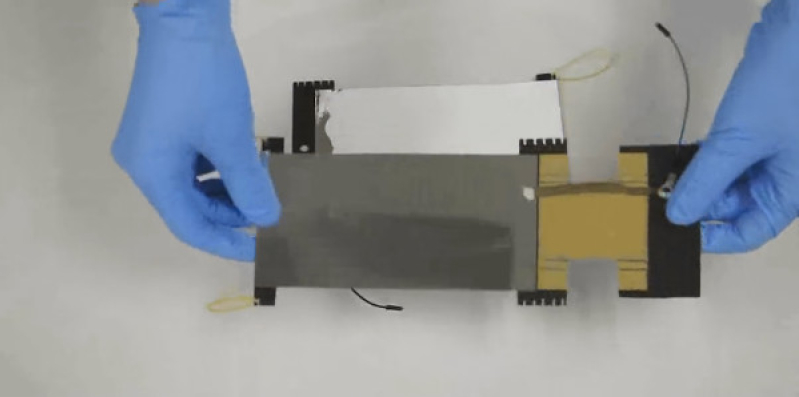
With many of us enamored by the sheer number of superhero movies in at the cinemas, it is no wonder that everydays science and technological advancements are moving in a similar direction, bringing to life what is fictional albeit at a much slower pace. Iron Man and his collection of suits have made many people salivate at the thought of one day being able to own an exoskeleton such as those. Be patient, boys and girls, as it looks like the latest technology involving electrostatic sheets could end up seeing action in a new generation of exoskeletons for their sheer lightweight quality, which means one does not need to move around in a bulky piece of machinery.
At this point in time, existing exoskeletons are more of the clumsy and cumbersome kind - similar to the one that we saw Ripley move about in Aliens as she fought with the Alien Queen. In other words, they are downright bulky and weigh a whole lot, where even the sleekest of designs are not that pleasing to the eyes. Over at Carnegie Mellon University, however, its bunch of merry researchers have come up with an exoskeleton clutch mechanism which hardly registers its weight on the scale.
Known as the Electroadhesive Clutch, the name itself more or less gives the game away, as it would rely on electrostatic adhesion between specially coated electrode sheets in order to control spring movement. Tipping the scales at a mere 0.05 ounces per pair, this means they are 30 times lighter compared to existing clutches, and even better news is it uses up to 750 times less juice.
Steve Collins, IEEE member and associate professor of biomechanical engineering at Carnegie Mellon University, shared, "A sandwich bag and a couple of pieces of aluminum foil helped me conceptualize the Electroadhesive Clutch, particularly how the transference of power would work in allowing the clutch to operate on such low power. The primary challenge in prosthesis and exoskeleton design is discovering functionalities that will actually help humans. With the Electroadhesive Clutch, we can now use hundreds of individually controlled clutches - each one thin, lightweight and consuming very little electricity - in a single exoskeleton. This will completely change the way we design robotic systems in the future."
In other words, should the exoskeleton in question come with hundreds of clutches, the robotic assistance itself would remove plenty of strain from your body. Not only that, to have triple the amount of torque density is also another huge plus point. Such technology might not see action on the battlefield or espionage situations at this point in time, but they can certainly be harnessed to assist the disabled as well as rehabilitate those who are trying to regain some semblance of mobility without having to work with a heavy and bulky piece of equipment.
Existing robots on the assembly line too, would benefit, since every single bit of weight- and power-saving measure does count at the end of the day. Will we see an Iron Man-like suit being sold on the open market one day? Perhaps, but that day would be very, very far away from now, if the Second Coming of Christ does not happen first. At least the manufacturing and health sectors are the immediate beneficiaries from the discover of this new exoskeleton clutch mechanism.







